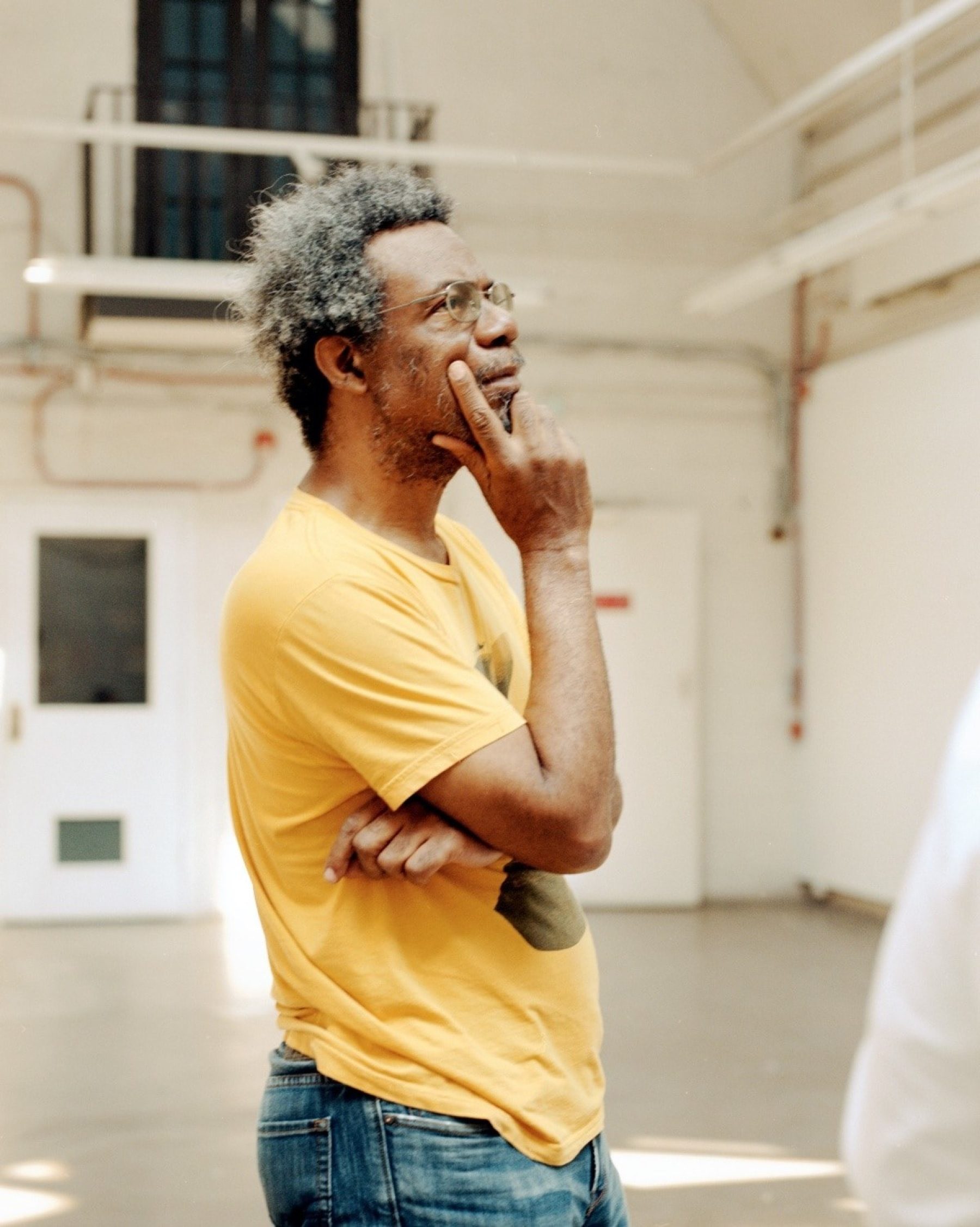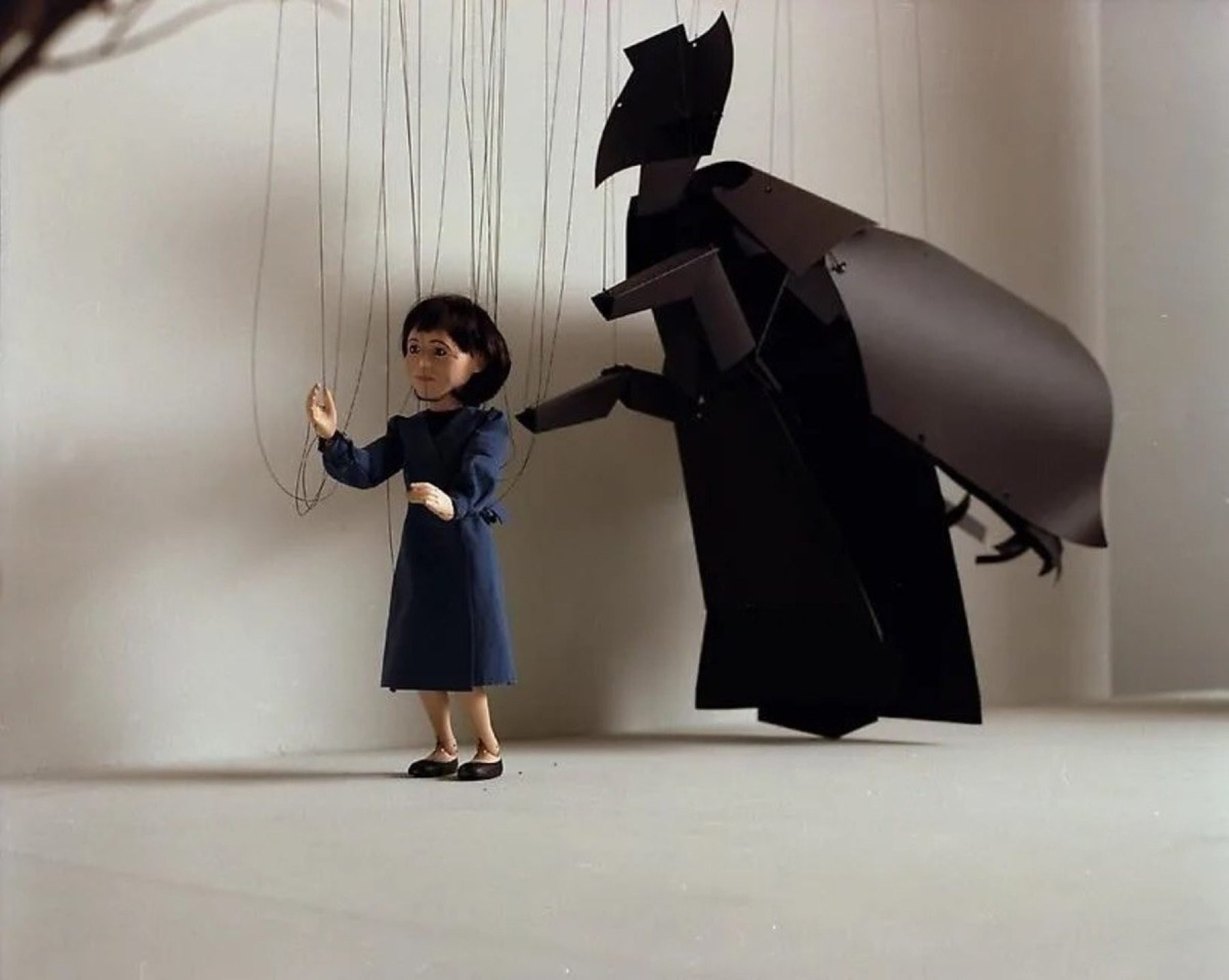This exhibition was on view from October 6 to December 22, 2023.
This Machine Creates Opacities: Robert Fulton, Renée Green, Pierre Huyghe, and Pope.L
About
On the occasion of the Carpenter Center’s 60th anniversary, This Machine Creates Opacities restages four major works by artists Robert Fulton, Renée Green, Pierre Huyghe, and Pope.L that examine the ways buildings choreograph, shape, and control social life, learning, and cultural structures. With its title borrowed from statements the artist Pope.L made about navigating the Carpenter Center building upon an invitation to make a new commission, the exhibition reflects on the program, affect, history, and various complexities of Le Corbusier’s iconic architecture. Each one of the included film-based works was created directly in response to the Carpenter Center as an institutional site and explores architecture through the lens of experimental cinematography and the expansive formal, technological possibilities of video installation to excavate a building’s aesthetic and social functions. This Machine Creates Opacities is divided between two floors of the building and presents Pierre Huyghe’s video This is Not a Time for Dreaming (2004), alongside documentation of the performance and sculptural elements from Pope.L’s Corbu Pops (2009) on level 3, while Reality’s Invisible by Robert Fulton (1971), and Renée Green’s Americas: Veritas (2018) are screened on level 1.
This is Not a Time for Dreaming
Made originally for the Carpenter Center’s 40th anniversary, Pierre Huyghe’s video This is Not a Time for Dreaming (2004) is a puppet opera that draws from the artist’s own experiences with the Carpenter Center to retell the history of Le Corbusier and his efforts to construct the building. Known for his approach to speculative fiction, Hyughe engages the surreal and fraught conditions of the site-specific artist commission in this project, employing various theatrical modes–from the puppet play, Dadaist musical theater, and scale models (long a teaching tool, an object sitting between sculpture and architecture)–to levy playful yet sharp critiques of academic institutions. The allegorical fable that unfolds shifts between historical, contemporary, as well as fantastical events to explore the struggles and compromises that occur while creating a new work in response to a historically loaded site.
Corbu Pops
When creating his commission Corbu Pops (2009) for the Carpenter Center’s level 1 space, Pope.L referred to the building as a “confusing machine,” one that “manufactures disorientation in the form of a dark, viscous liquid. Unlike a washing machine, this machine creates opacity.” In its original form, the site-specific project consisted of an elevated stage with head holes for actors, hand-crafted masks, a video documenting Dada-inspired performance rehearsals, photocopies of modernist architectural critique, cast scale models of the Carpenter Center mounted on sticks like large popsicles, a glass of water, sound, and drawings made of stationary. The video element of the installation entitled Modernism, Race, and Mr. C fuses narration on the formation of the project, art historical debates about modernism’s indebtedness to African visual culture, an interview with Sheldon Cheek from the Image of the Black Archive and Library at Harvard University, and an amalgam of other archival materials. The video of this performance, and various installation elements of this pivotal work will be restaged for This Machine Creates Opacities.
Reality’s Invisible
Robert Fulton’s 16mm film Reality’s Invisible (1971)—made while the pioneering cinematographer was teaching in the Department of Visual and Environmental Studies at the Carpenter Center (now the Department of Art, Film, and Visual Studies)—layers candid interviews with students, faculty lectures, student artworks, and swooping, lingering shots of the building’s architecture. Fulton edited the sounds and images of his film to meld together in what he termed “tones,” which echo an almost psychedelic immersive experience. The intimate yet frenetic footage captures classroom and studio activities along with students’ intellectual and political concerns, creating a disorienting, sometimes dark portrait of a building and the social, pedagogical communities that it choreographs. Fulton, also an accomplished aerial cinematographer, would tragically pass away in a private plane accident in 2002, whereupon The Film Study Center at Harvard University established The Robert E. Fulton III Fellowship in Nonfiction Filmmaking in his honor.
Americas: Veritas
In Americas: Veritas (2018) Renée Green—artist, filmmaker, writer, and professor in MIT’s Art, Culture, and Technology program—places in dialogue Le Corbusier’s only two structures built on the American continent: the Carpenter Center for the Visual Arts in Cambridge, Massachusetts, and Casa Curutchet in La Plata, Argentina. The work was commissioned as part of Green’s two-year residency at the Carpenter Center, culminating in the 2018 exhibition Within Living Memory. Green employs methods made possible by aerial cinematography by utilizing drones and a 360-degree camera. The work melds the architectures of both Le Corbusier buildings, distorting and blending their proposedly universalist structures, using surveillance technology, optical deformations, and exaggerations to interrogate the formal, epistemic, and technological frameworks that continue to shape the various embodied experiences defined by iconic modernist architecture.
This Machine Creates Opacities revives these important past site-specific commissions to both celebrate the building’s capacity to inspire but also to reflect on the Carpenter Center’s institutional memory since it opened to often skeptical audiences in 1963. On view will also be a variety of ephemera and process-related materials related to each work. Writing in Le Corbusier at Work: The Genesis of the Carpenter Center for the Visual Arts (1978) the Carpenter Center’s first director Eduard Sekler explained the foremost obligation of the Center’s program, to perform “an educational task in making students from all departments of the University more intensely aware of their visual environment. It will encourage them to develop within themselves, in visual rather than verbal terms, a grasp of the sensory values involved in their total experience.” Through the lens of these works made in this context, This Machine Creates Opacities reopens and hopefully reinvigorates questions around fugitive narrative and history, distortion as access to deeper realities, social performance and architecture, and the complex nature of creativity within pedagogical institutions.
This Machine Creates Opacities is curated by Dan Byers, John R. and Barbara Robinson Family Director, with Danni Shen, Curatorial and Public Programs Assistant. Special thanks to Galena Sardamova, 2023 Carpenter Center Archives Intern.
Exhibition Materials
Download
Gallery Guide
Selected Press
This Machine Creates Opacities is made possible by Teiger Foundation.

Generous support for Carpenter Center programming is provided by the Friends of the Carpenter Center.

Renée Green: Pacing
$50.00
American artist Renée Green (born 1959) spent two years engaged with the Carpenter Center for the Visual Arts at Harvard University, during which she presented a series of interlinked public programs and exhibitions, culminated with her major exhibition Within Living Memory (2018). Green’s Carpenter project, Pacing, is a meditation spurred by inhabiting an architectural icon—Le Corbusier’s Carpenter Center—while exploring the historical and institutional legacies of modernism’s other forms, including cinema, visual art, poetry, music and literature.
This handsome publication illuminates Green’s unfolding process, with a sequence of exhibitions that took place from 2015 and culminating in Pacing: Facing in Toronto; Tracing in Como, Italy; Placing in Berlin; Spacing in Lisbon; and Begin Again, Begin Again in Los Angeles. The result is a meditation on creative processes across histories and media, partially inspired by two architectural icons: Rudolf M. Schindler and Le Corbusier. Despite grand ambitions, Le Corbusier was only able to realize two buildings in the Americas, the Carpenter Center in Cambridge, Massachusetts, and Casa Curuchet, in La Plata, Argentina. In Pacing, dreams, projections and geographically distant buildings are put into dialogue through time, weaving a layered constellation of unexpected relations.
Lavishly illustrated, Renée Green: Pacing features new texts by Gloria Sutton and Fred Moten, and brings together a series of previously unpublished conversations between the artist and Yvonne Rainer, Nora M. Alter and Mason Leaver-Yap. Additional contributions are provided by Nicholas Korody, William S. Smith and Carpenter Center director Dan Byers.
Archive
Explore more of our rich history through our archive.


